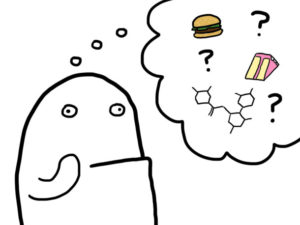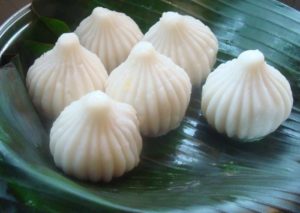
“Kyun lena hai difficult option?” SRK, a.k.a Dr. Jag, asks Alia Bhat (Kaira) in the movie. He mentions that, often, the answer is that we unknowingly like to punish ourselves, because we believe that until we go through some suffering, there can be no rewards.
After watching Dear Zindagi, I came out of the theatre with a feeling that Mr. Khan has nailed it yet again (oh, yes! I am a SRK fan). After all, don’t we do this to ourselves on an everyday basis?
You visit a white-coat dietitian and she gives you a list of ‘DO NOT EAT’ foods which is invariably longer than the list of foods you are allowed to eat. After much struggle, you finally make it to your gym only to hear your big-bicep trainer say, “No pain, no gain.” The words we associate ‘weight loss’ with are deprivation/ suffering/ punishment. You eat your raw kale salad but in your mind, you are romancing with the hot gulab jamun soaked in its juices. And to make things worse, you end up feeling guilty just thinking about it, let alone eating it.
Like Dr. Jag in the movie, the point I am trying to make here is simple: Take the easy option. Because losing weight is not about choosing the difficult one!
To further elaborate my point, every time that you deny yourself of your favourite foods, you are deprived of Vitamin J (Joy). Now the short-term effect of Vitamin J deficiency is overeating and its long-term effect is weight gain!
Here’s how—
 1. You eat more food than you would otherwise, in an attempt to get the necessary level of satisfaction.
1. You eat more food than you would otherwise, in an attempt to get the necessary level of satisfaction.
Poha/ paratha/ thalipeeth for breakfast or oats: what is more satisfying?
Every time you try a tasteless and ‘guilt-free’ alternative to your favourite foods, you actually end up eating more than you would otherwise.
2. You deprive yourself of Vitamin J at one meal, only to overcompensate for it at the next.
Have you ever noticed yourself reaching for that late night chocolate treat after a ‘no carbs’ dinner of soup and salad/ chicken breast? When your dinner fails to hit the spot, you end up craving for more carbs and calories later.
3. You make it easier to ‘fall off’ and harder to ‘get back with your diet.
You are more likely to ‘fall off’ from a diet that is not inclusive of the foods that you like. The end result is that you see yourself yo-yoing from having lost some weight only to gain back double of the weight lost.
The alternative—
1. Let go of the idea of ‘on-plan’ foods and ‘off-plan’ foods.
There is no ‘diet’ food or ‘anti-diet’ food. Include foods that you like and that you have grown up eating as part of your diet. That way you are more likely to not fall off the wagon. The more sustainable it gets; the more weight you lose. That too in a sensible and reasonable manner.
2. Eat mindfully and savour the flavour.
Don’t let shame, guilt or fear take the joy out of your food. Allow yourself to fully experience every flavour and texture. When you do this, you won’t need as much to feel satisfied from the meal.
3. Let your Vitamin J come from the right place.
Choose your homemade delicacy over a packaged food product. A homemade laddoo over a cookie not only gives you the much needed Vitamin J in abundance, it is rich in all other nutrients too.
If all this sounds well and good, I hope you will approach ‘weight loss’ as something that supports your life rather than becomes your life, because life is all about joy and love. Love you, Zindagi!
Trying to lose weight without going on an extreme diet? Let dietitian Munmun Ganeriwal who specialises in Indian food help you with a holistic weight loss program. Contact us now to know more or set up a consultation!


 The need of the hour is to encourage cultivation of various NUCs and get them back in our diets. The cross – sectoral benefits of doing so are –
The need of the hour is to encourage cultivation of various NUCs and get them back in our diets. The cross – sectoral benefits of doing so are –